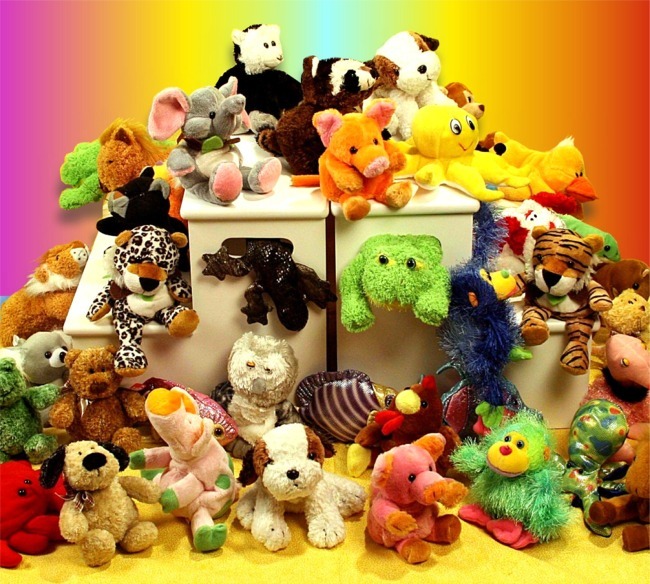
Twenty years after the introduction of Beanie Babies, you have to think that if they’d been stuffed with actual beans, at least you could eat them and they’d be worth something.
Videos by Rare
Alas, they were stuffed with inedible plastic pellets and are now mostly worthless.
That wasn’t always the case. Just a couple of years after being introduced in 1993, the tiny amalgamation of bean bag and cuteness sold like hotcakes and were considered highly collectible.
A few years later, however, demand went south faster than a deputy accused of murder and collectible value plummeted.
The Atlanta Journal-Constitution, like most other media outlets, reported on the craze. Our archives contain dozens of photos of happy (and later unhappy) Beanie Babies buyers.
“They’re cuter than trolls and softer than Pet Rocks. And right now, they’re hotter than Matchbox cars,” was the unfortunate lead of a 1996 article.
“You’d think they have wings, ” said Marc Goldberg, a marketing director during the frenzy, because “the $5 toys usually fly off the shelves as soon as they are delivered.”
In 1997, fast food megachain McDonald’s began including miniature versions of “the hottest toy around” and predicted “one in every three Americans will have a Teenie Beanie Baby in their house by mid-May.”
The same year, a “Beanie Baby benefit dinner” at Buckhead’s Corner Cafe sold out of $25 tickets in “less than an hour.”
The toys were still hugely popular in 1998, when the AJC reported “extra employees and security [were needed at a McDonald’s in Riverdale] to keep the final rush for toys under control.”
By 1999, the bloom was off the rose. In January of 1999, the AJC ran an article with the title “Beanie Babies don’t always equal big bucks.” The sobering advice included the fact that a toy listed at $600 in one price guide probably couldn’t be sold for more than the $5 it cost.
The writing was on the wall (and in the AJC): “When we asked 16 of our readers around the country how Beanie Babies were faring in their neck of the woods, 13 said they seemed to be losing popularity.”
“The bottom line. ‘I don’t advise anyone to buy them for resale,’ said Patricia Van West, a writer for several Beanie Babies magazines. ”The market for Beanies could crash next year. They’re not a good investment. Buy them because you love them.”
Van West was right. Production was temporarily halted in 1999 in an effort to increase demand, but Beanie Babies’ time in the sun was over.
National Public Radio’s Marketplace had a segment this morning about one family whose father invested more than $100,000 into the stuffed critters.
The father began collecting Beanie Babies at the peak of their popularity, thinking he could later sell the toys for a huge profit and pay for his five children to go to college.
As he says in the “Bankrupt by Beanies” mini-documentary by his son, filmmaker Chris Robinson, he’s never sold even one. Most would now sell for less than $1.
The man who introduced the toys, Ty Warner, mortgaged his home and invested his life savings to launch the Beanie Baby line. At the peak of the craze he invested in hotels and now owns the Four Seasons in New York City, among other properties.
His estimated net worth is $2.5 billion and he donates millions to charity.
So, maybe Beanie Babies were worth something after all.
Related articles
- Family Bankrupted by Beanie Babies (drudge.com)



